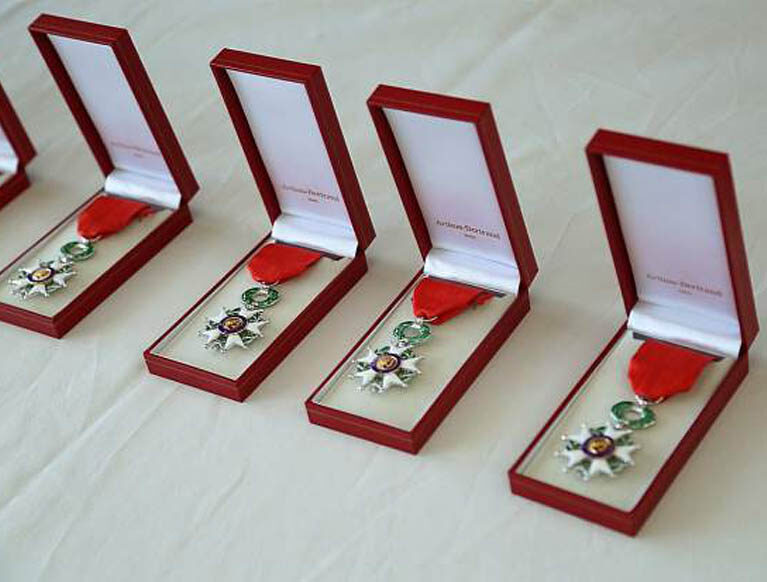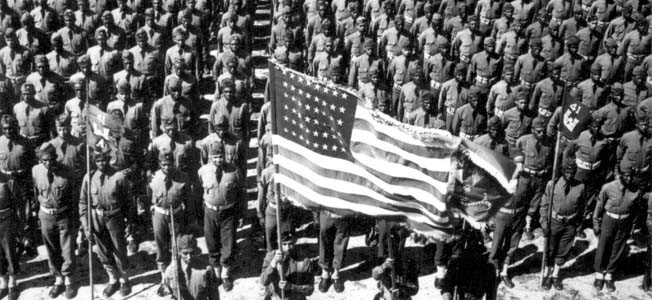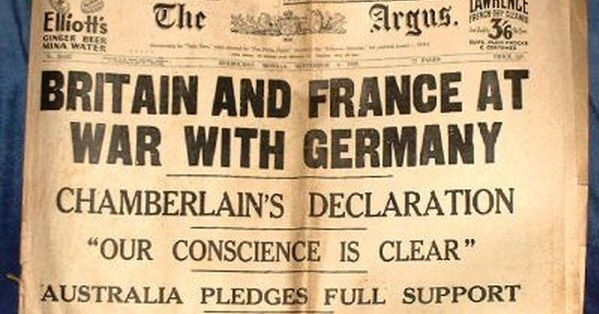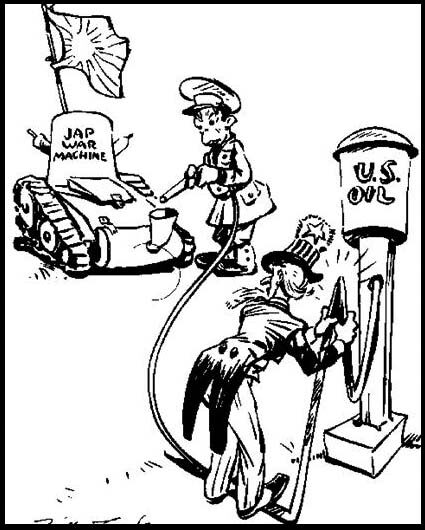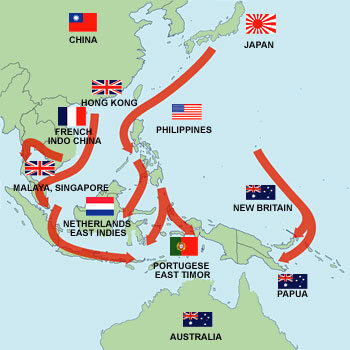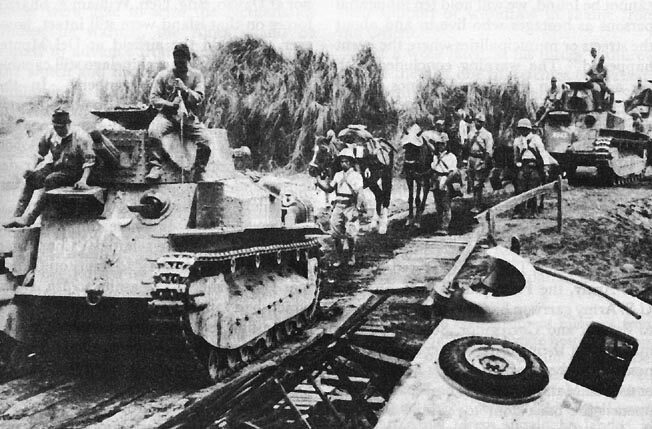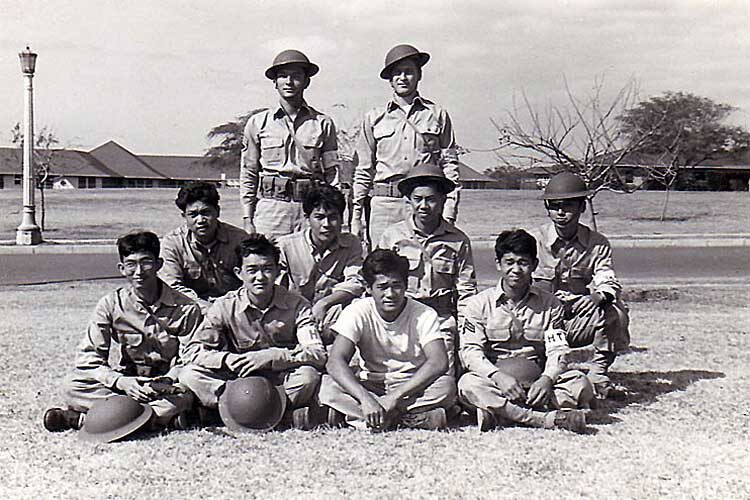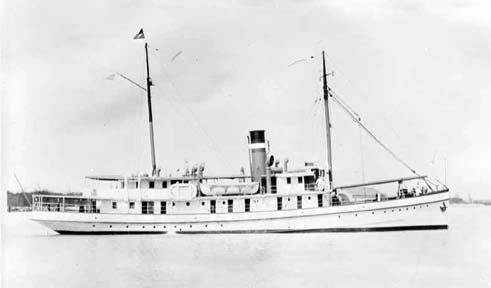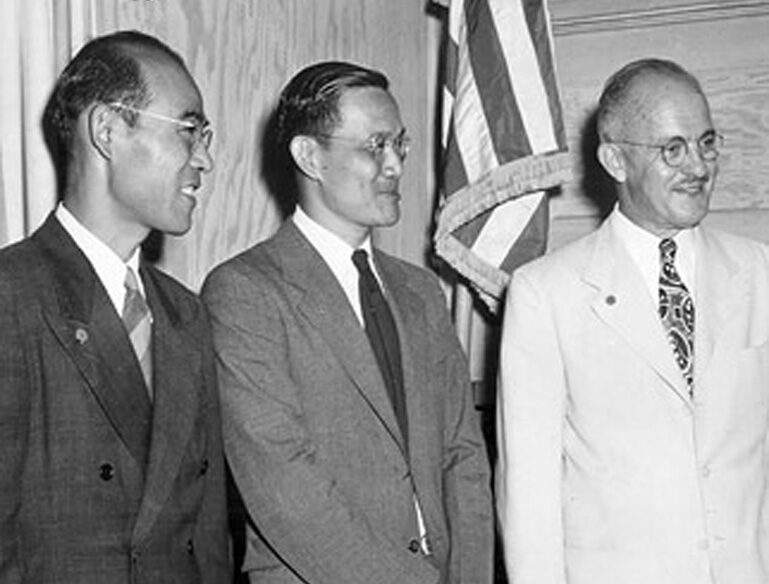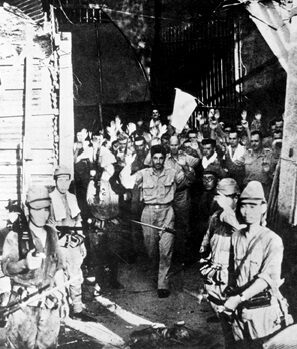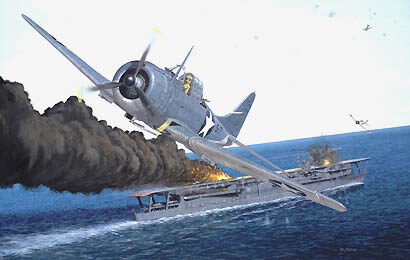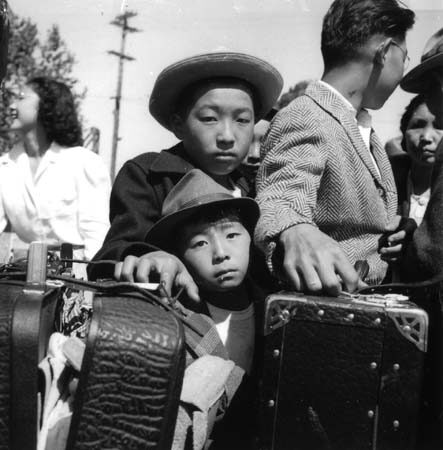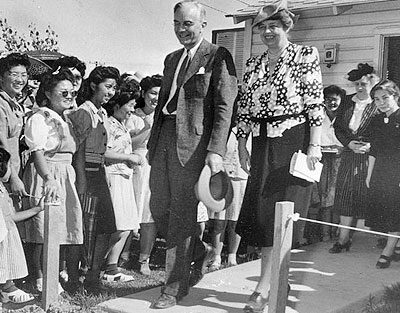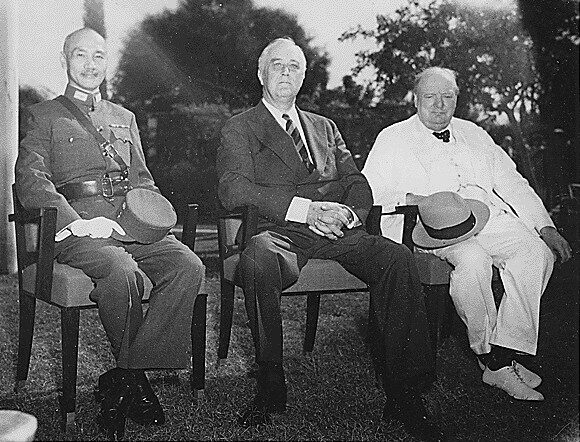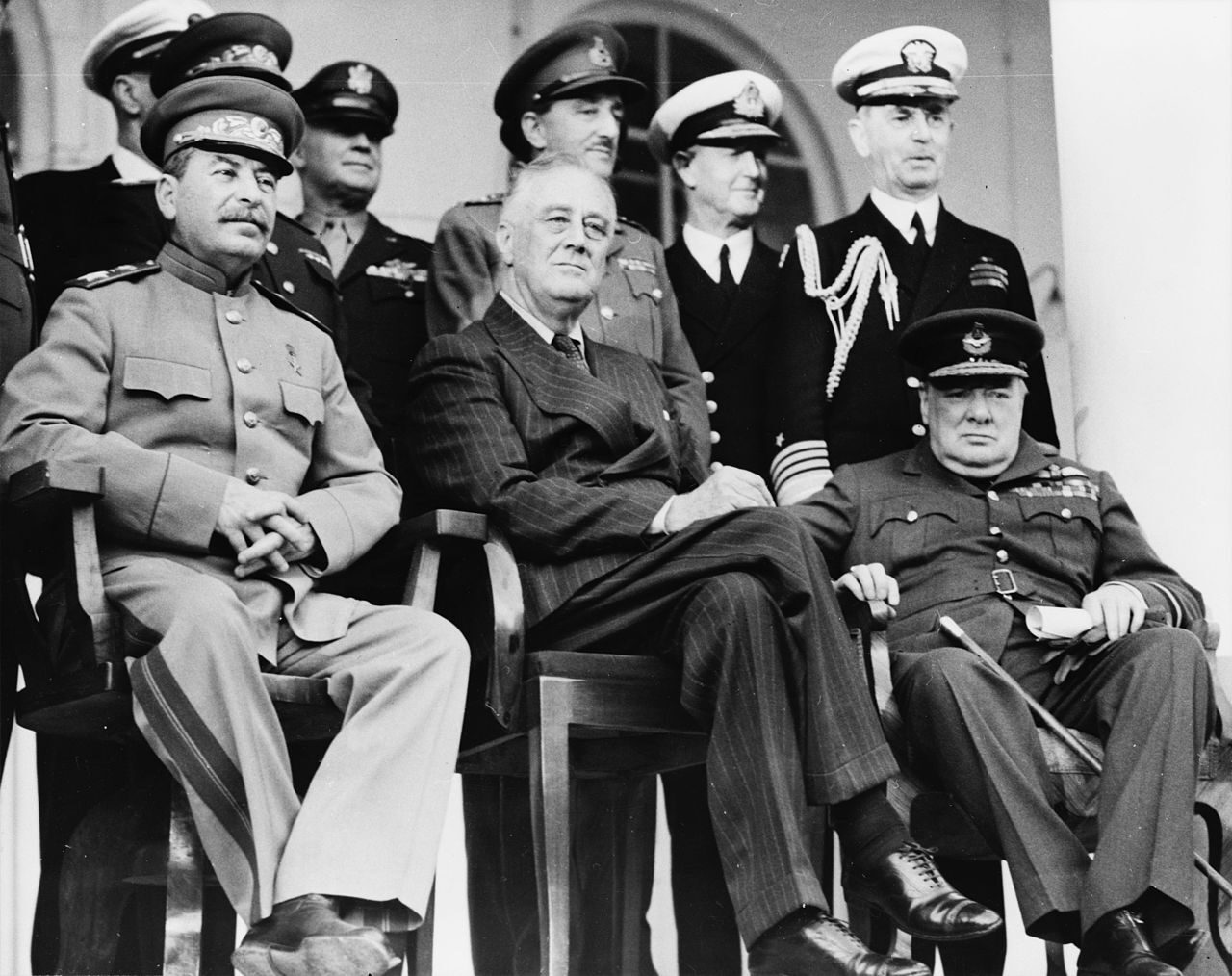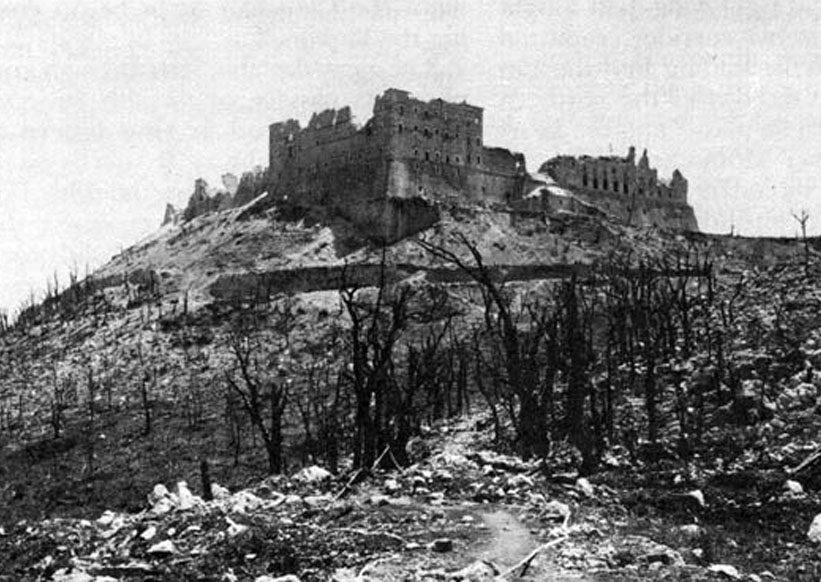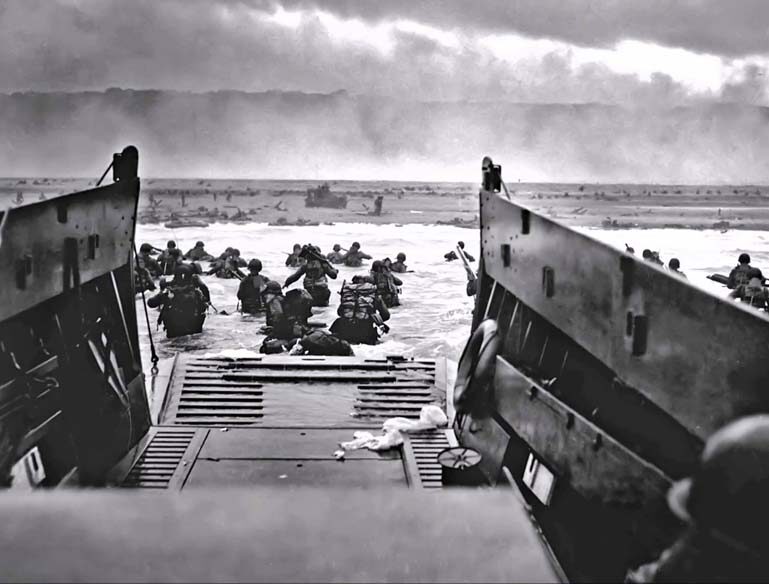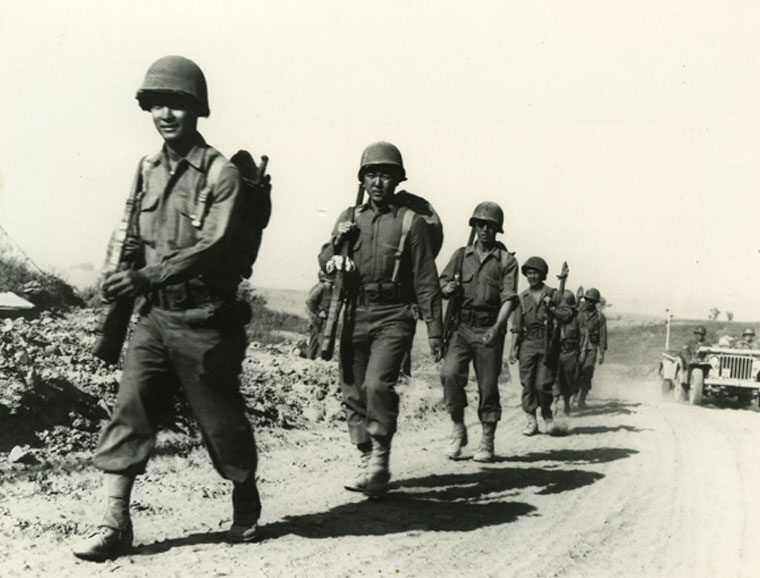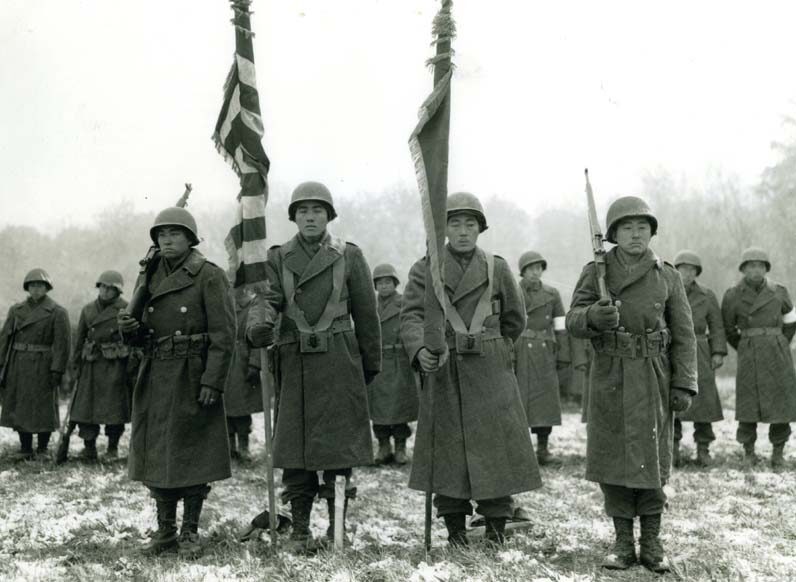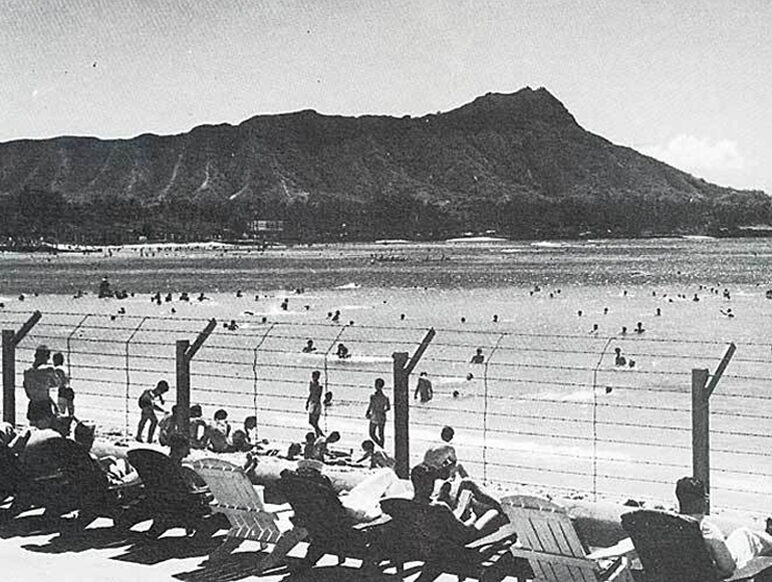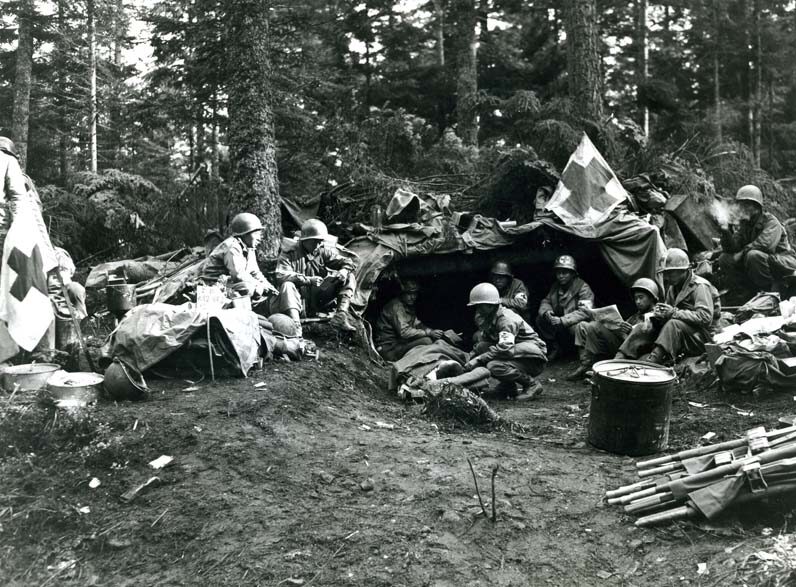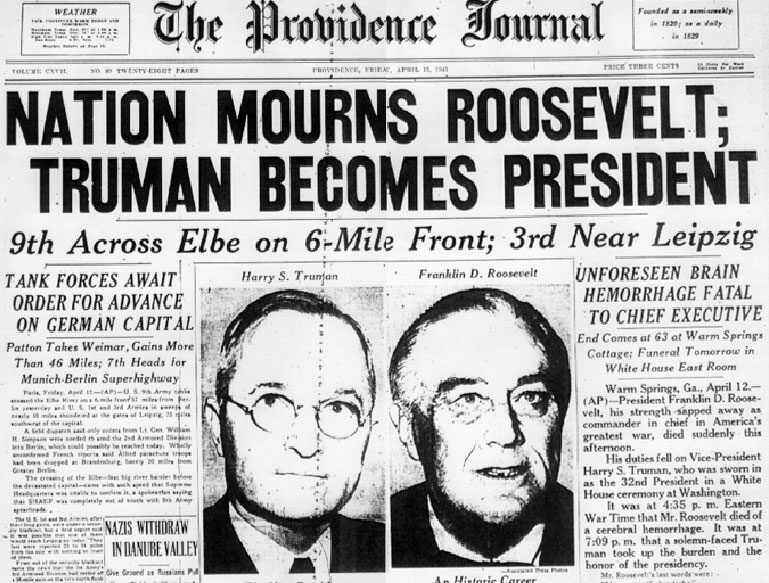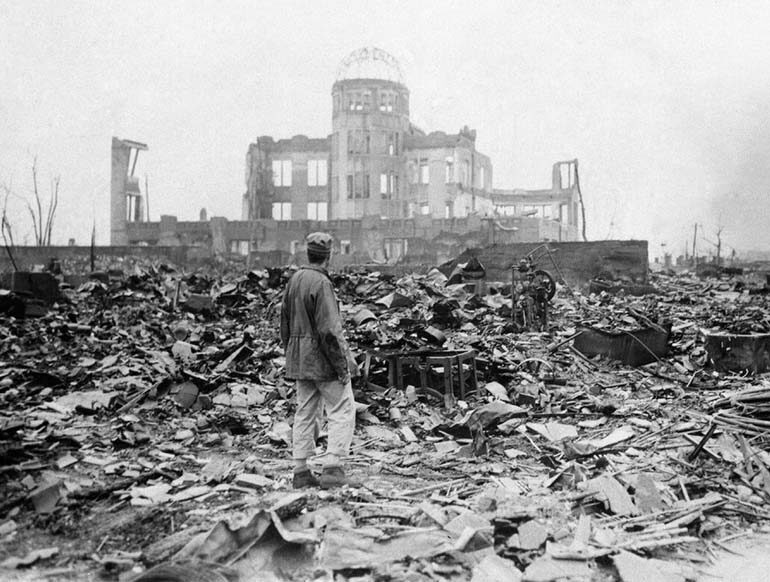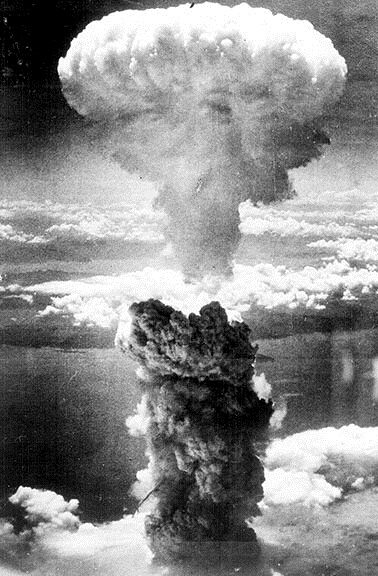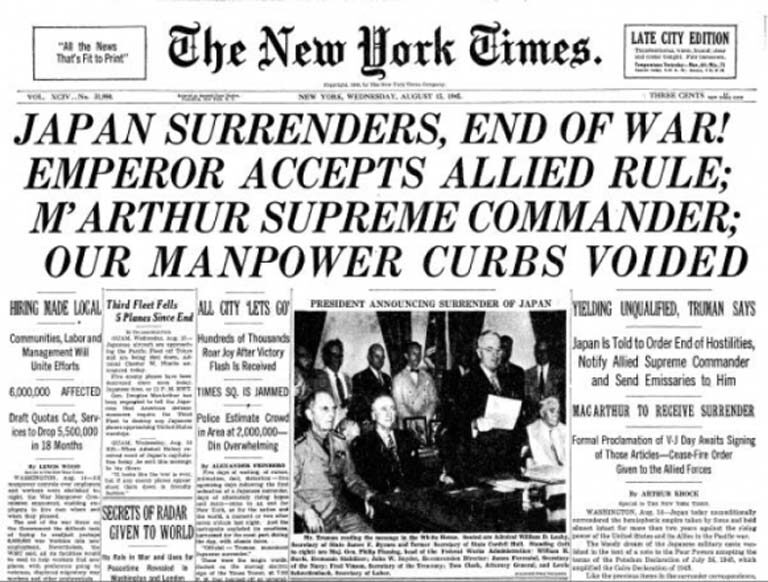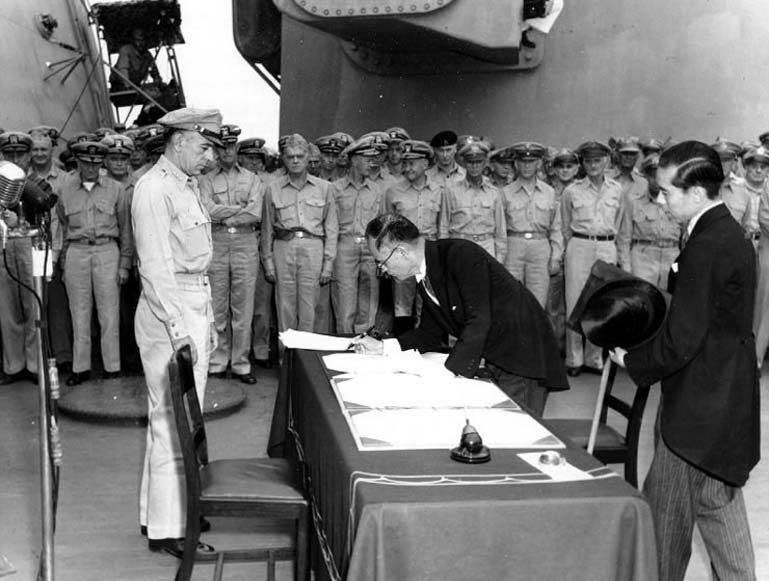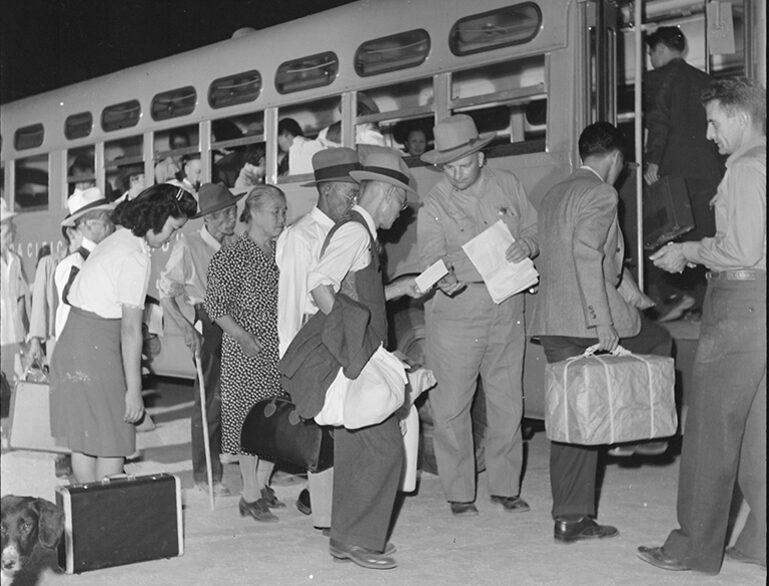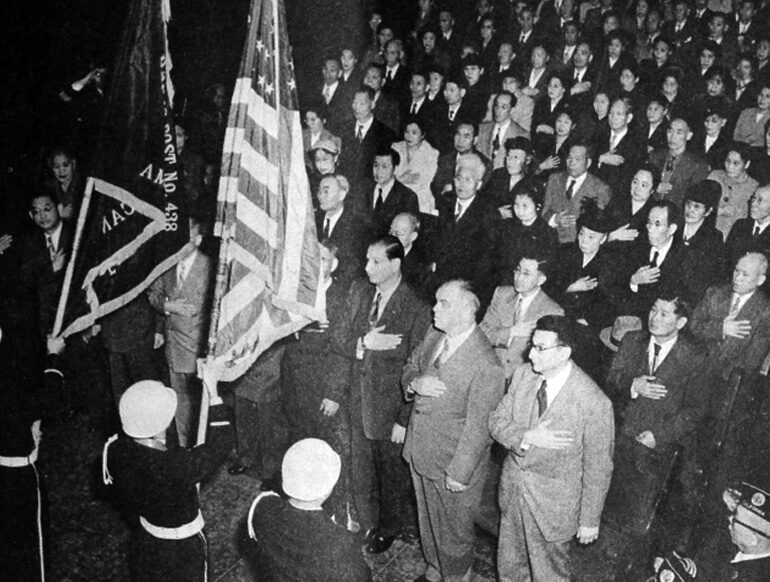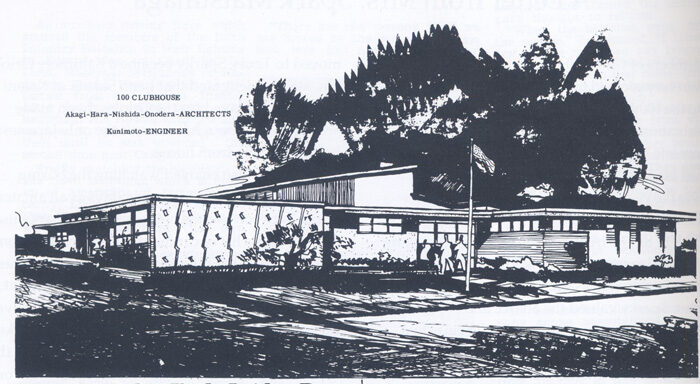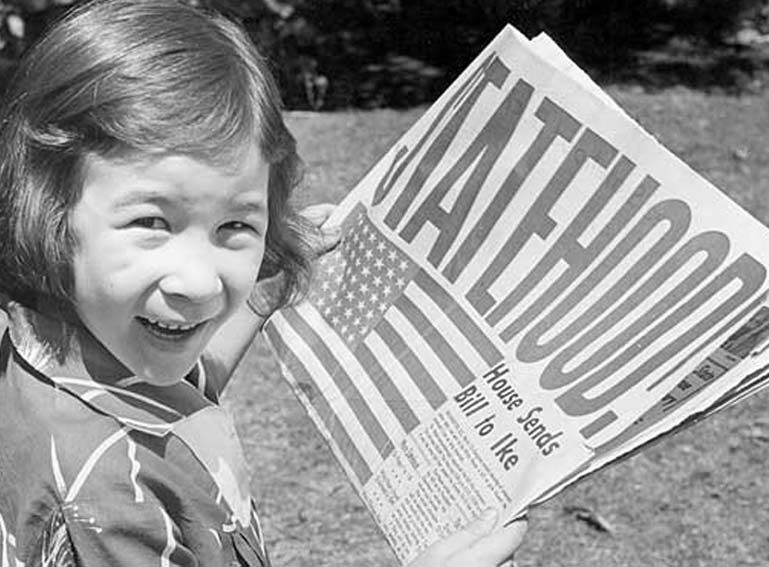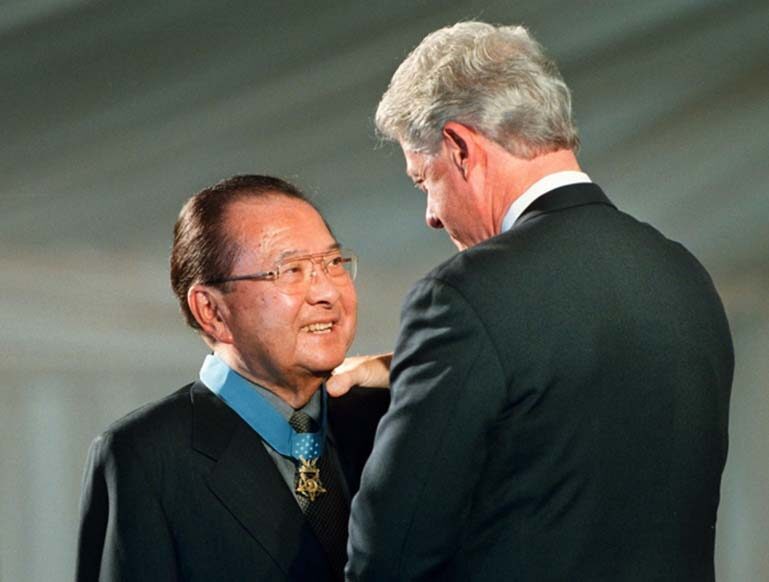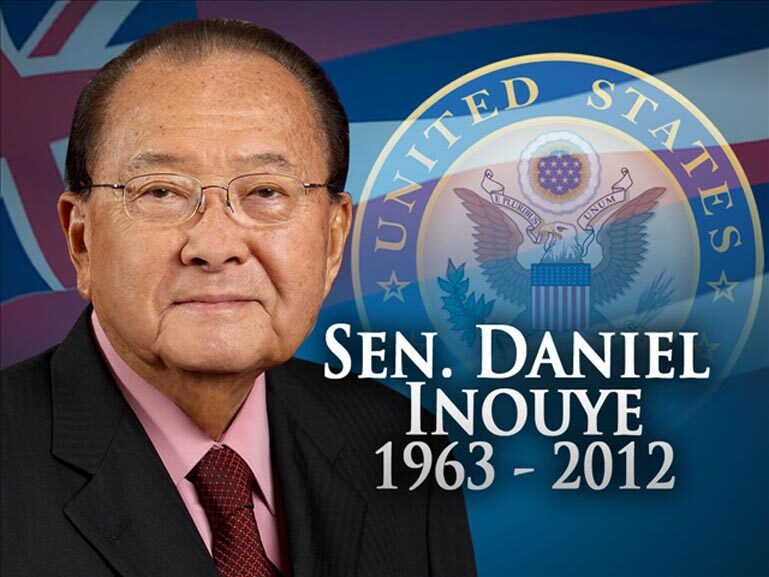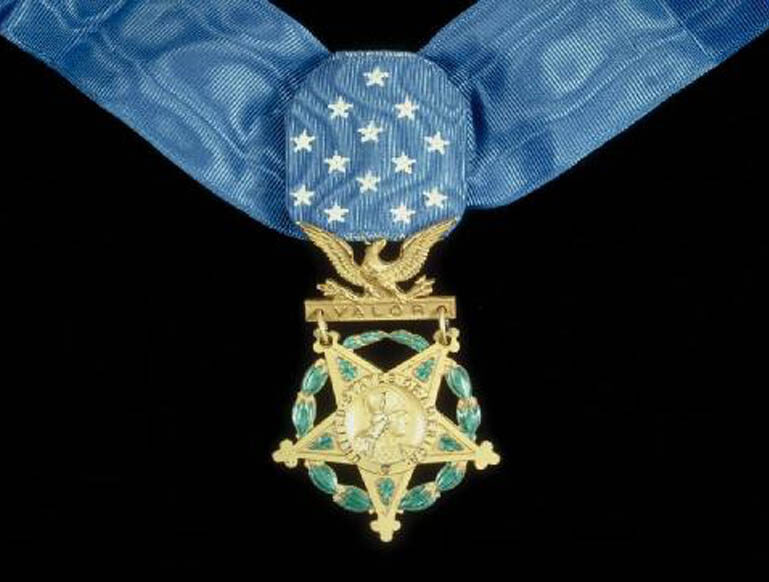Tripartite Pact by Axis Powers
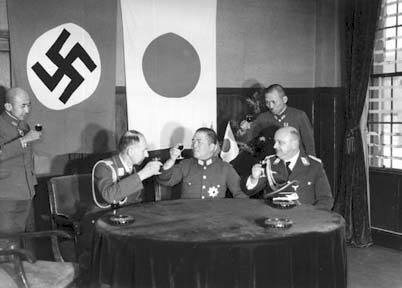
Hawaii Territorial Guard Federalized
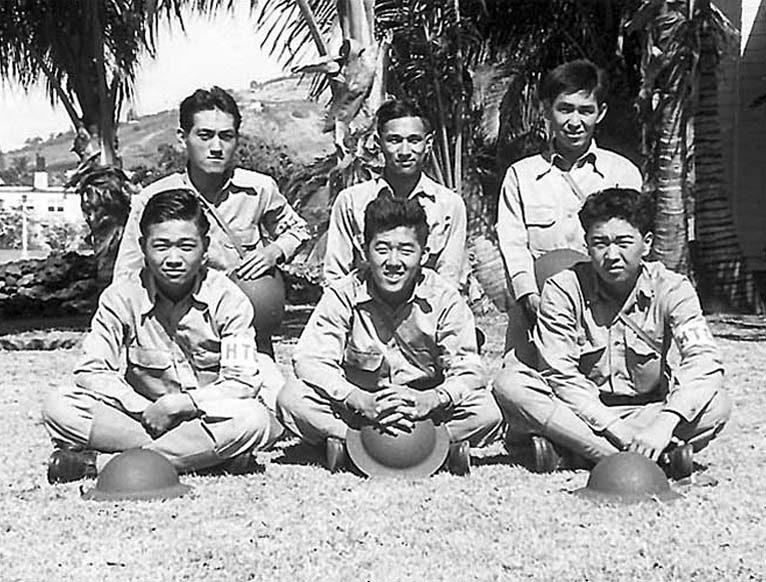
298th & 299th Infantry Regiments of the Hawaii Territorial Guard are federalized. Over the coming year, their ranks swell with 3,000 Hawaii draftees, half of them Nisei.
Preparing AJA Community for War
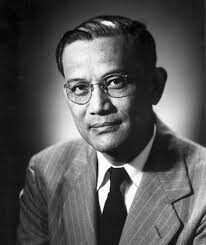
Hawaii Council for Interracial Unity established to prepare Japanese American community for impending war. Hung Wai Ching, Director of the YMCA in Honolulu, plays a major role in organizing this foundational interracial effort in Hawaii.
Honolulu Police Form Espionage Bureau
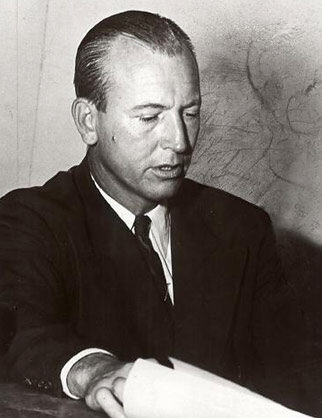
Honolulu Police Department forms Espionage Bureau headed by Police Captain John A. Burns. This unit has connections in all the Japanese American community groups on Oahu, and it will work closely with the FBI unit in Hawaii.
Japan Attacks Pearl Harbor

7:48 am – Japan begins attack on Pearl Harbor and 6 airfields on Oahu; 8 battleships sunken/ damaged, 64 of 223 Army aircraft destroyed; 2,335 military & 68 civilian deaths.
Hawaii Territorial Guard Mobilized
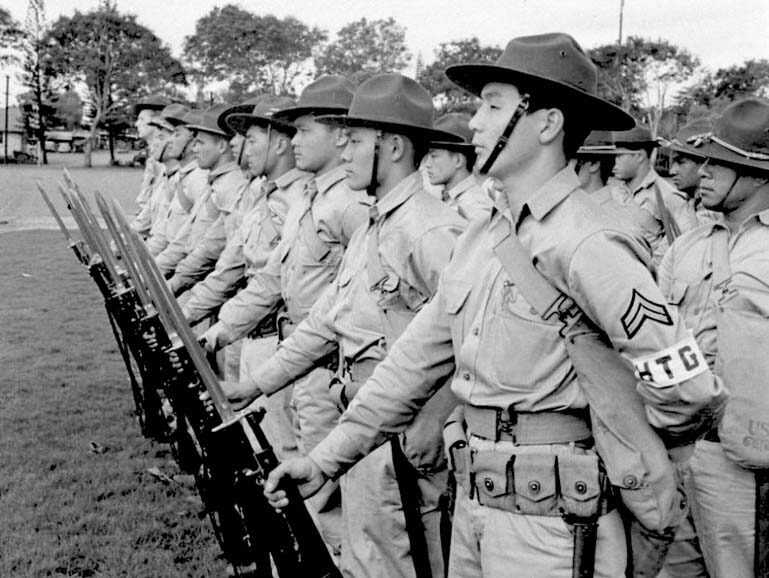
10:00 am – Hawaii Territorial Governor Joseph B. Poindexter calls University of Hawaii ROTC cadets to form the Hawaii Territorial Guard. Its primary mission is to protect critical infrastructure from sabotage.
Martial Law Declared in Hawaii
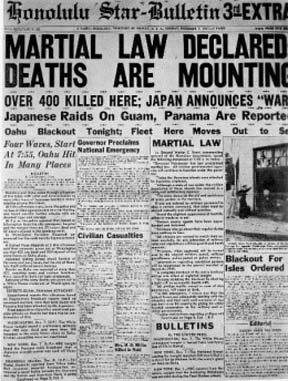
11:30 am – Martial law declared in the Territory of Hawaii: habeas corpus suspended; mandatory curfew; gas rationing; civil courts closed; mail/press censored. The civilian governor becomes subordinate to the Military Governor.
Territorial governors wartime:
Joseph B. Poindexter (1934-1942)
Ingram M. Stainback (1942-1951)
Military governors:
Lt. Gen. Walter C. Short – December 7-17 1941
Lt. Gen. Delos C. Emmons – December 17, 1941-June 1, 1943
Lt. Gen. Robert C. Richardson – June 1, 1943-October 24, 1944
11:30 am – Martial law declared in the Territory of Hawaii: habeas corpus suspended; mandatory curfew; gas rationing; civil courts closed; mail/press censored. The civilian governor becomes subordinate to the Military Governor. Territorial governors wartime: Joseph B. Poindexter (1934-1942) Ingram M. Stainback (1942-1951) Military governors: Lt. Gen. Walter C. Short – December 7-17 1941 Lt. […]
Hawaii Internment Camps Opened
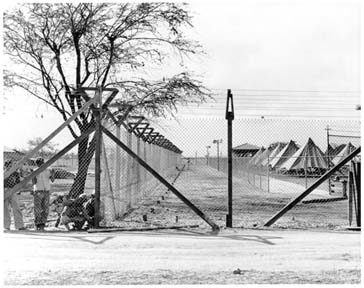
Call for Mass Internment of Hawaii AJAs
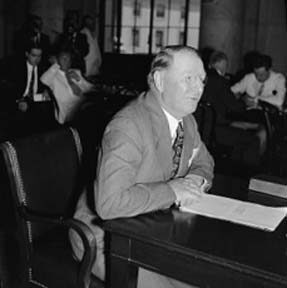
Secretary of Navy Franklin Knox visits Hawaii December 11 & 12 to assess the situation. In December 14 report, he calls for mass incarceration or removal of Japanese Americans in Hawaii.
Lt. Gen. Emmons Appointed Military Governor
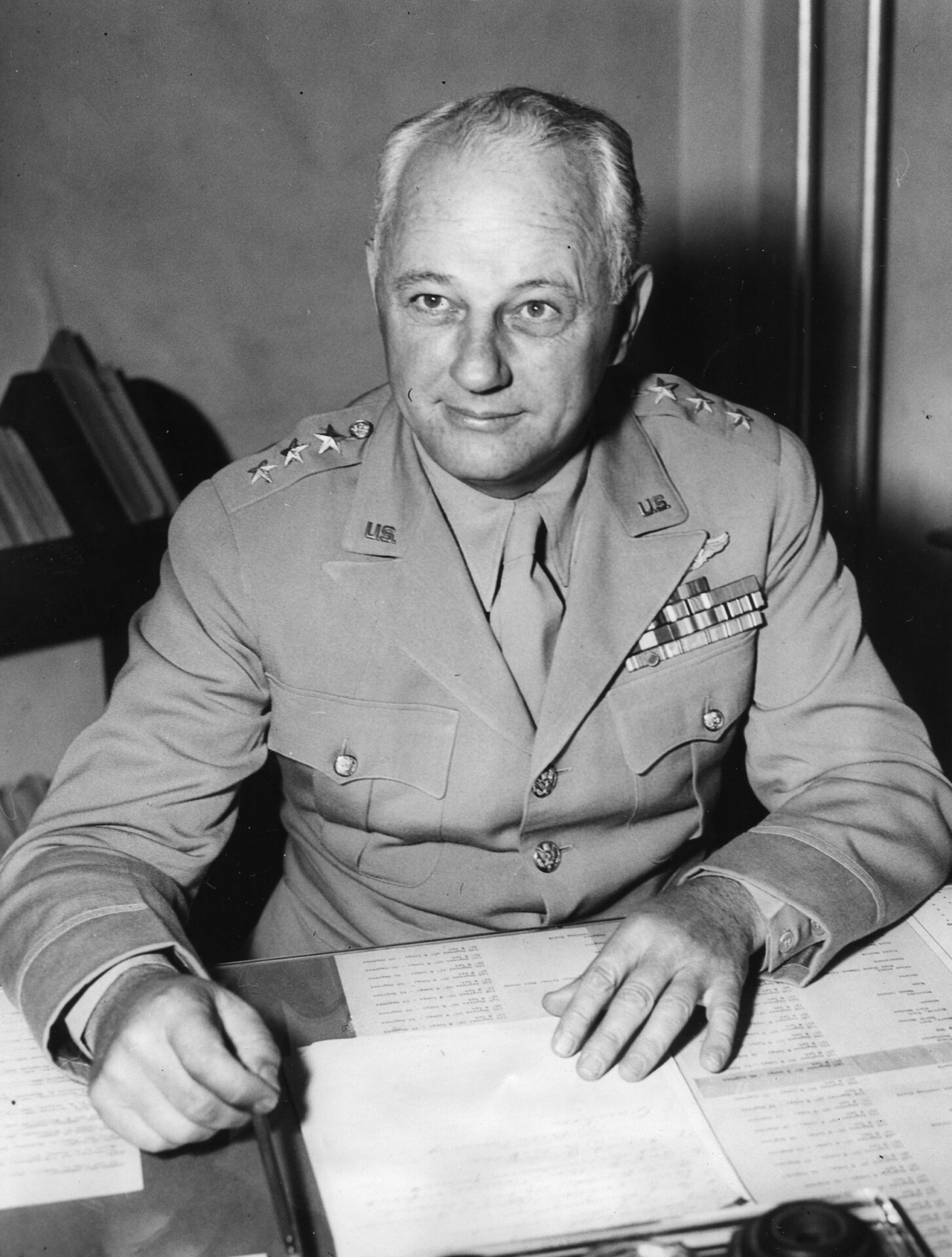
Ten days after the Pearl Harbor attack, Lt. Gen. Delos C. Emmons is appointed as the Military Governor of the Territory of Hawaii and commander of the Hawaii Department of the U.S. Army. A 1909 graduate of West Point, Emmons served most of his career in the development of the Army Air Force. He is familiar with Hawaii having previously served two years there as the commander of the 18th Composite Wing, and Air Officer of Hawaiian Department.
Ten days after the Pearl Harbor attack, Lt. Gen. Delos C. Emmons is appointed as the Military Governor of the Territory of Hawaii and commander of the Hawaii Department of the U.S. Army. A 1909 graduate of West Point, Emmons served most of his career in the development of the Army Air Force. He is […]
Military Governor Establishes AJA Unit
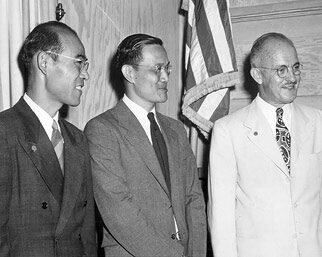
Morale Section of the Military Governor’s Office established, headed by Shigeo Yoshida, Hung Wai Ching, and Charles Loomis. Very important subcommittees were created in this wartime element of the Territorial government, in particular the Emergency Service Committee, which worked with the Americans of Japanese ancestry community.
Morale Section of the Military Governor’s Office established, headed by Shigeo Yoshida, Hung Wai Ching, and Charles Loomis. Very important subcommittees were created in this wartime element of the Territorial government, in particular the Emergency Service Committee, which worked with the Americans of Japanese ancestry community.
Hawaii AJAs Saved From Mass Internment
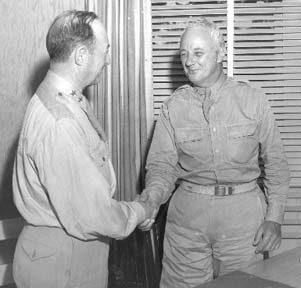
Lt. Gen. Delos C. Emmons, Hawaii’s military governor, FBI Director J. Edgar Hoover, and prominent local leaders argue successfully against mass forced interment of Hawaii Japanese. This is foreshadowed by General Emmons’ immediate creation of the Morale Section and subsequent deflection of direction from the War Department in Washington DC to begin mass internment.
Lt. Gen. Delos C. Emmons, Hawaii’s military governor, FBI Director J. Edgar Hoover, and prominent local leaders argue successfully against mass forced interment of Hawaii Japanese. This is foreshadowed by General Emmons’ immediate creation of the Morale Section and subsequent deflection of direction from the War Department in Washington DC to begin mass internment.
Battle of Bataan Begins
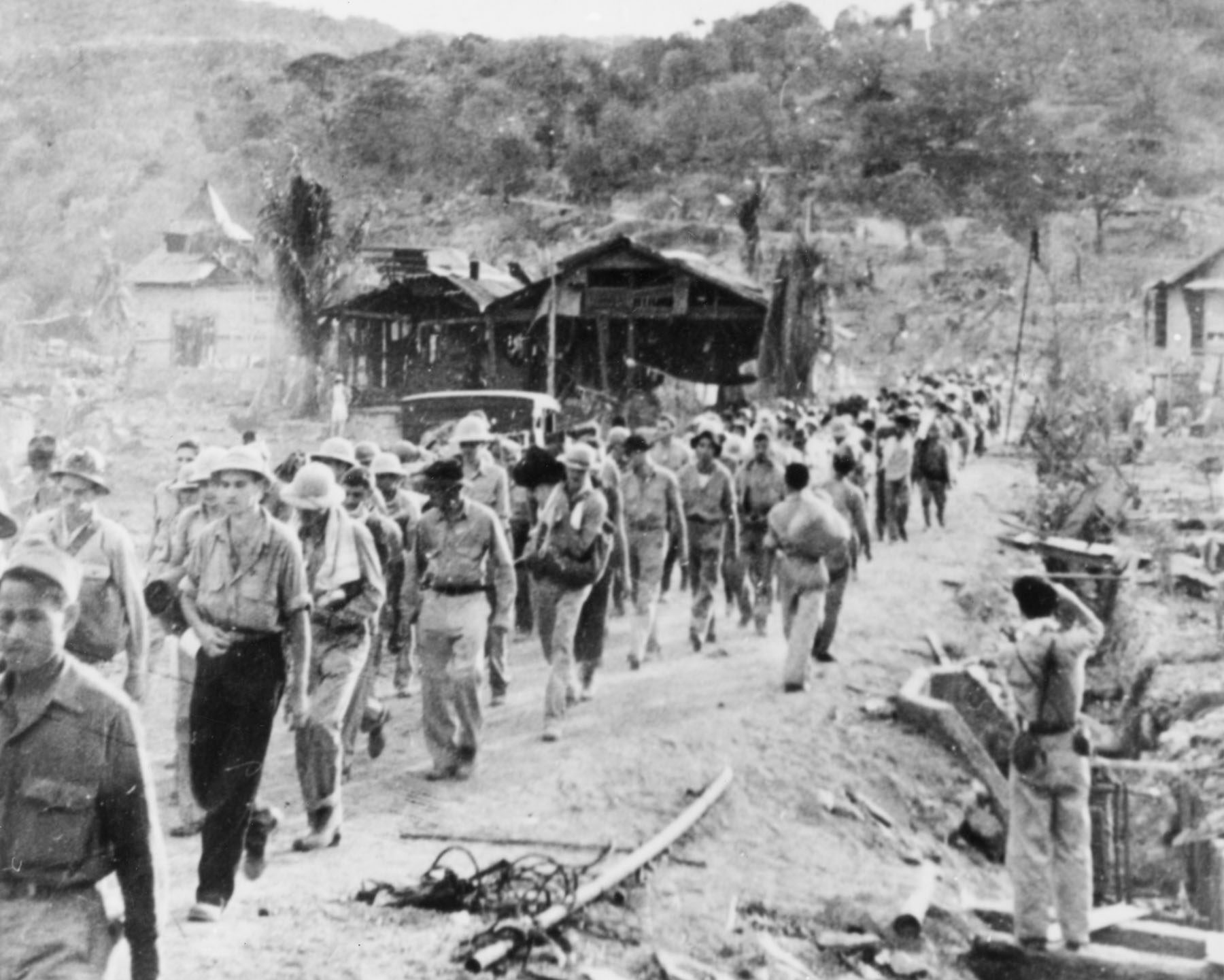
Battle of Bataan begins in Philippines – US/Filipino forces surrender on April 9, 1942, the largest surrender in US history; 60,000 Filipino and 15,000 US POWs forced into 60-mile Bataan Death March.
AJAs on Mainland Interned
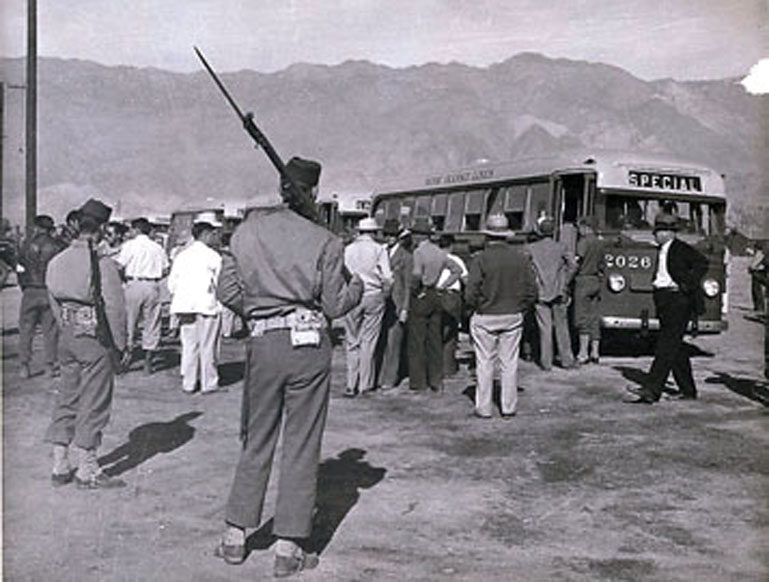
Executive Order 9066 signed by President Franklin D. Roosevelt authorizing forced removal of AJAs from the West Coast; 110,000 mostly US-born are sent to internment camps, where they are imprisoned for most of the war period.
Hawaii AJAs Interned on Mainland
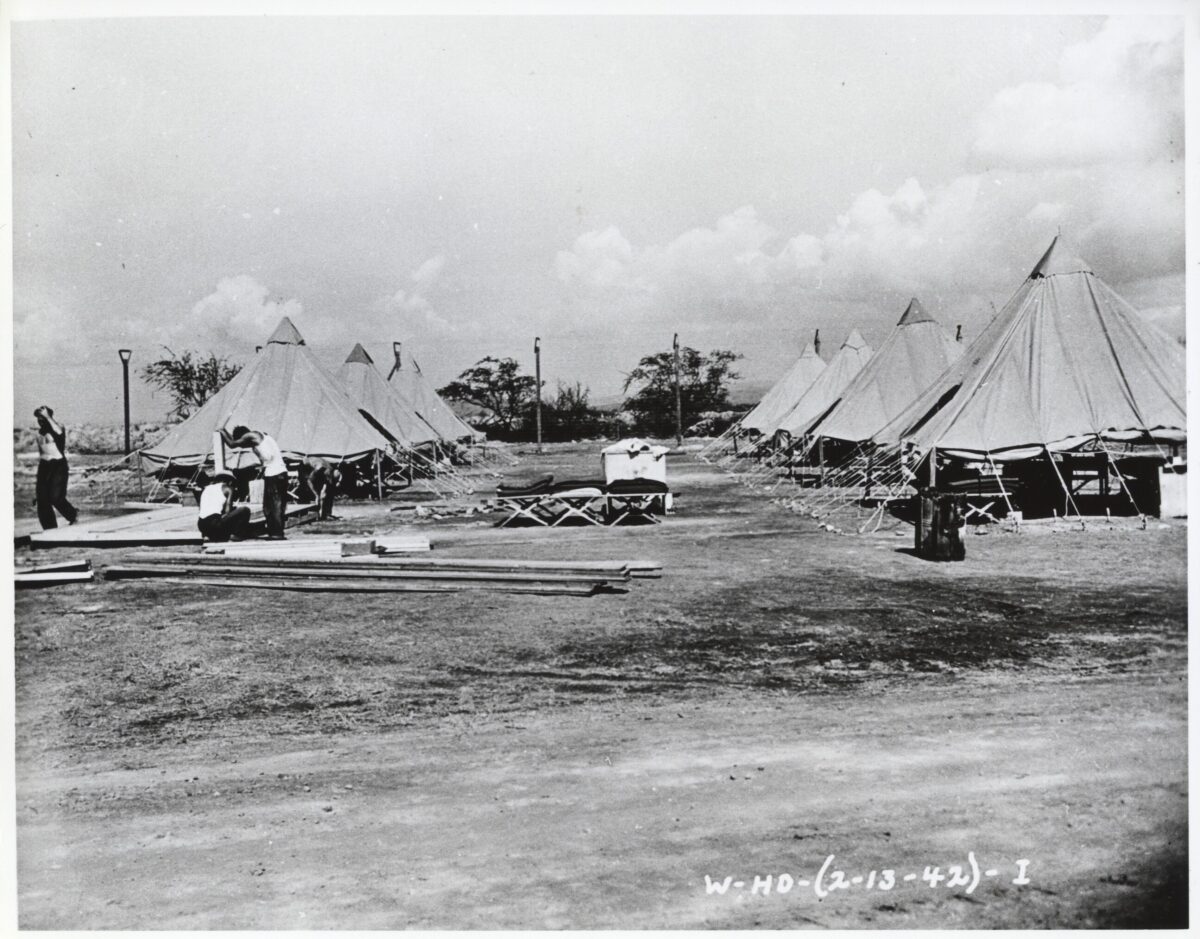
First Hawaii AJAs are sent from the Sand Island detention camp on Oahu to Mainland prison facilities in the continental US; more follow in 1942 and 1943. Over 600 are sent from Hawaii to Mainland imprisonment. Eventually, many of their families are allowed to join them.
Varsity Victory Volunteers Start Work
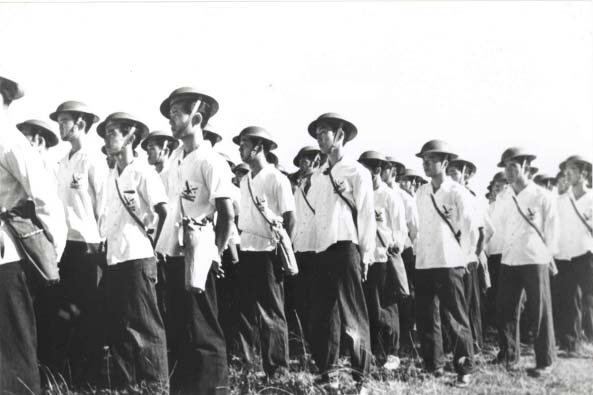
Varsity Victory Volunteers are organized with 169 University of Hawaii ROTC students, most of whom had been in the Hawaii Territorial Guard. They are assigned as a labor battalion for the U. S. Army Engineers on Oahu.
100th Bn (Sep) Activated
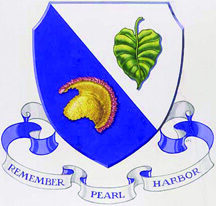
1,432 Nisei soldiers, recruited before Pearl Harbor, depart Hawaii on S.S. Maui for training at Camp McCoy, Wisconsin. Before departure from Hawaii they had been formed as the Hawaiian Provisional Infantry Battalion. On arrival at Oakland, California, they are renamed as the 100th Infantry Battalion, a name destined to make military history. It is designated “Separate” to indicate it is not part of a larger Army unit.
1,432 Nisei soldiers, recruited before Pearl Harbor, depart Hawaii on S.S. Maui for training at Camp McCoy, Wisconsin. Before departure from Hawaii they had been formed as the Hawaiian Provisional Infantry Battalion. On arrival at Oakland, California, they are renamed as the 100th Infantry Battalion, a name destined to make military history. It is designated […]
442nd RCT Activated
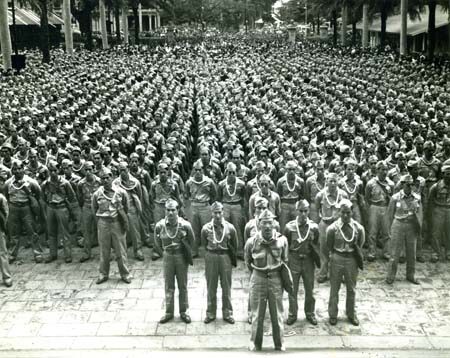
Nisei 442nd Regimental Combat Team authorized by War Department, composed of: 1 infantry regiment, 1 field artillery battalion, 1 engineer company, 1 medical detachment, and an army band. The cadre to organize, train, and lead the combat team is quickly formed and sent to Camp Shelby, Mississippi, to prepare for the arrival of the thousands of young Nisei men who are expected to respond to the call to volunteer. The officers selected are almost all experienced Caucasian soldiers and are given orders to report to Camp Shelby typically within 2 weeks. The enlisted cadre are AJA soldiers, many of whom had been drafted before Pearl Harbor and are now sidelined in menial tasks because of their ancestry.
Nisei 442nd Regimental Combat Team authorized by War Department, composed of: 1 infantry regiment, 1 field artillery battalion, 1 engineer company, 1 medical detachment, and an army band. The cadre to organize, train, and lead the combat team is quickly formed and sent to Camp Shelby, Mississippi, to prepare for the arrival of the thousands […]
Nisei Men May Be Drafted
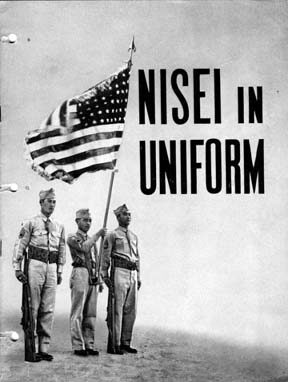
War Department reclassifies Nisei men, allowing them to be drafted and to serve in the U.S. Army. This also opens the door to allow the U.S. Army to call for AJA volunteers for the 442nd Regimental Combat Team.
Call for Volunteers for the 442nd
The War Department plans for the 442nd RCT call for 4,000 men, 1,500 to come from Hawaii and 2,500 from the Mainland concentration camps where the west coast AJA families have been imprisoned. However, the expectation from the concentration camps is not met and the quota from Hawaii is increased. 10,000 volunteer in Hawaii and 2,686 are enlisted beginning Mar 23, 1943. They are sent to Schofield Barracks on Oahu island to organize and prepare for shipment to Camp Shelby, Mississippi, to be trained as a combat-ready regiment.
The War Department plans for the 442nd RCT call for 4,000 men, 1,500 to come from Hawaii and 2,500 from the Mainland concentration camps where the west coast AJA families have been imprisoned. However, the expectation from the concentration camps is not met and the quota from Hawaii is increased. 10,000 volunteer in Hawaii and […]
442nd RCT Sent to Mainland
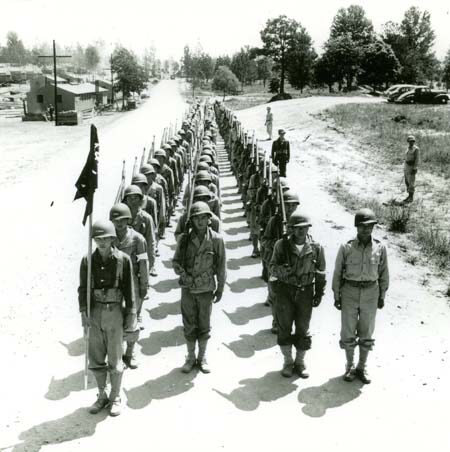
The 2,686 volunteers from Hawaii for the 442nd Regimental Combat Team are sent to Camp Shelby, Mississippi, for training. Over 100 have fathers in internment camps. They sail on the S.S. Lurline for Oakland, California, where they board three trains that will take separate routes to Hattiesburg, Mississippi.
The 2,686 volunteers from Hawaii for the 442nd Regimental Combat Team are sent to Camp Shelby, Mississippi, for training. Over 100 have fathers in internment camps. They sail on the S.S. Lurline for Oakland, California, where they board three trains that will take separate routes to Hattiesburg, Mississippi.
Company S Added to 442nd RCT
Company S added to the Combat Team, composed of Japanese Americans from Military Intelligence Service (MIS) Language School at Camp Savage, Minnesota. They are assigned to the 442nd for combat training prior to deployment to the Pacific Theater.
100th Bn (Sep) Departs For Europe
The 100th Infantry Battalion (Separate) departs Camp Shelby, Mississippi, by train for Camp Kilmer, New Jersey. On August 21 they board the S.S. James Parker at Staten Island, New York, and begin their voyage to the combat zone in Italy.
442nd Cannon Company Activated
Cannon Company of the 442nd Regimental Combat Team is activated at Camp Shelby, Mississippi. Its primary weapon is six light, truck-drawn, 105mm howitzers. They will provide close support to the regiment’s three infantry battalions, supplementing the fire power of the 522nd Field Artillery Battalion.
First Nisei Killed in Action
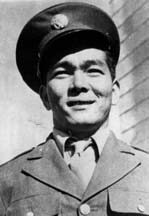
442nd RCT Lands at Anzio
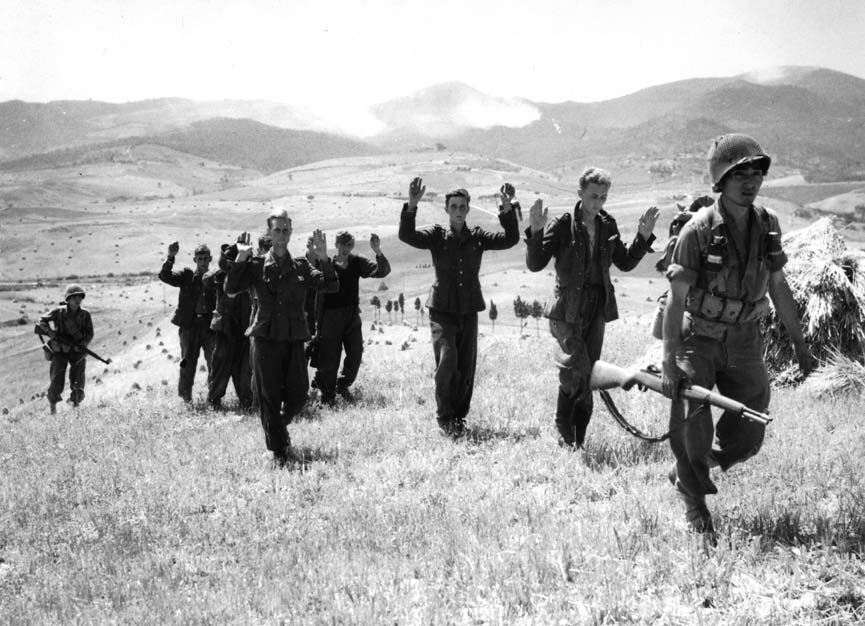
442nd Replacements to 100th Bn (Sep)
442nd Replacements to 100th Bn (Sep)
442nd RCT Departs Camp Shelby
1399th Engineers Activated
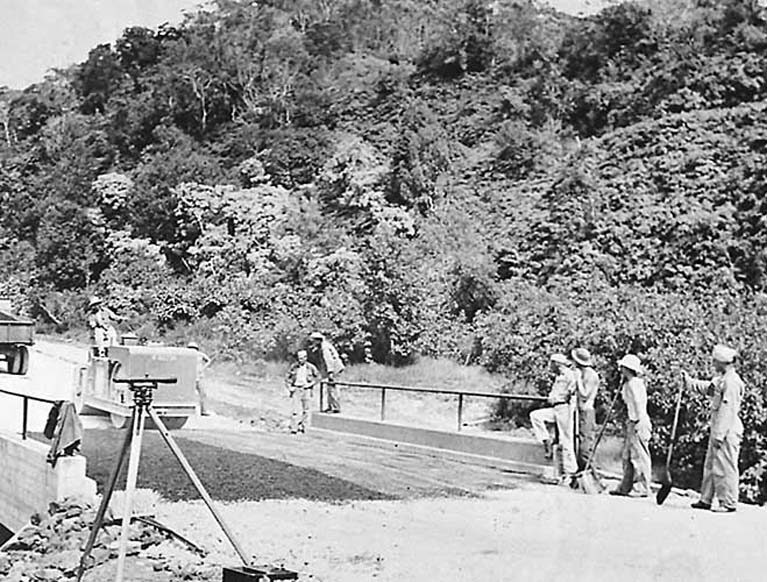
442nd Departs the US
The 442nd boards troop ships at Hampton Roads, Virginia. They join a large convoy of ships and set to sea, bound for Europe. The soldiers have not been told were they are going, but get a good clue when Italian language booklets are passed out. Sealed orders are opened once at sea and confirm they […]
442nd Replacements to 100th Bn (Sep)
442nd Arrives in Italy
100th Inf Bn Clears Way for Liberation of Rome
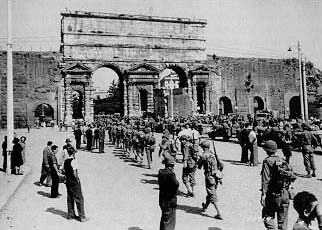
442nd Moves to Anzio Beachhead
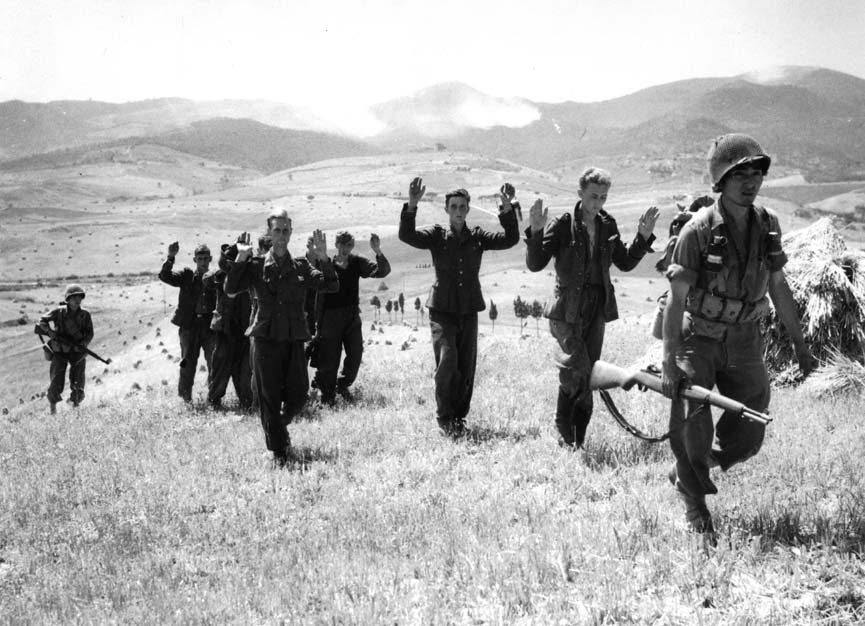
Over several days, the 442nd sails by LST and LSI to the Anzio beachhead. Following closely on the heals of the breakout and liberation pf Rome, the 442nd convoys to an assembly area north of Rome near Citivitavecchia. Here they will have final combat training and make preparations to move to the front line.
100th Bn (Sep) Attached to 442nd RCT
1st Bn Becomes 171st Bn (Sep)
100th Inf Bn (Sep) Joins 442nd RCT
Unit of the 442nd Invades Southern France
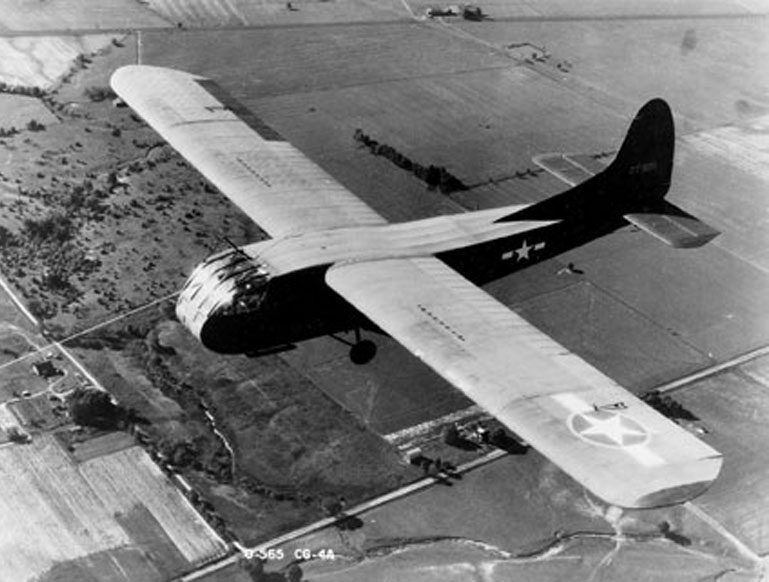
442nd RCT Assigned to 7th Army
442nd Moves to France
442nd Arrives at France Battlefront
442nd RCT Reassigned to Southern France
The battles to drive the Germans from the Bruyères and Biffontaine region and rescue the “Lost Battalion” presented the 7th Army with an unexpected opportunity to flank their lines and force them in retreat. This was the first time in recorded history that an attacking force had broken through the Vosges Mountains. But the 442nd […]
Yalta Conference
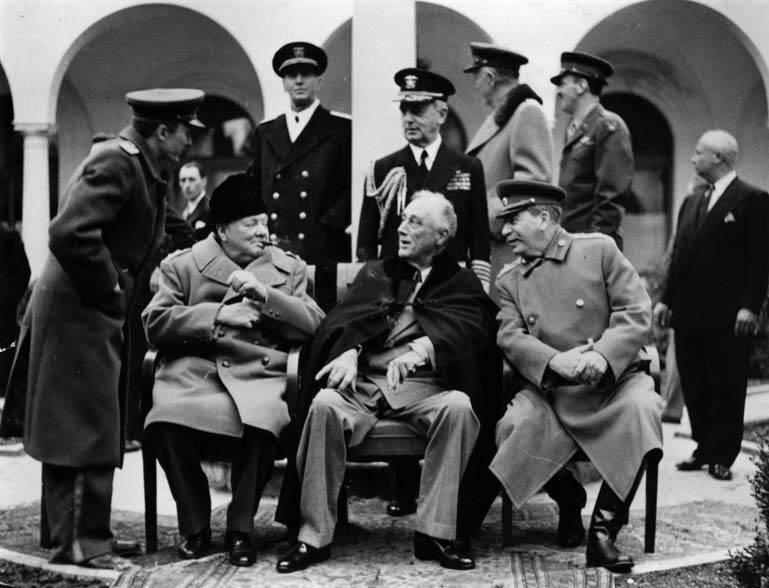
522nd FA Bn Enters Combat in Germany
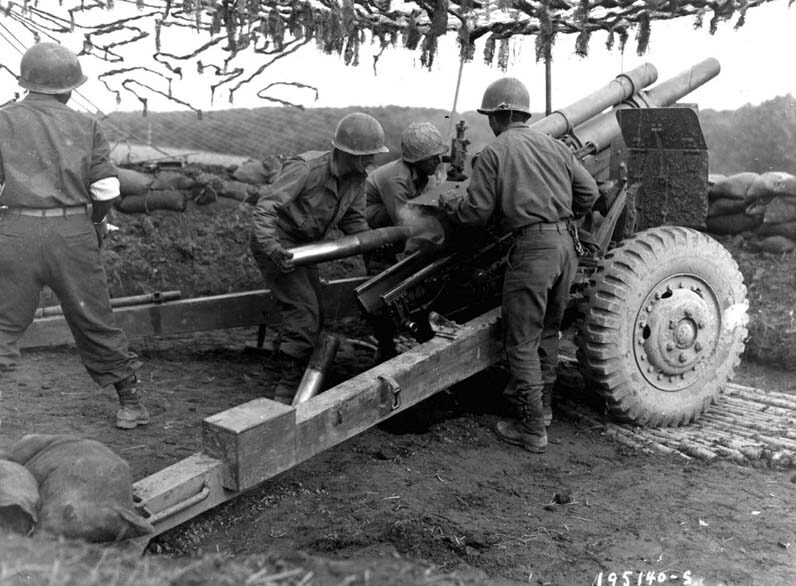
522nd Field Artillery Battalion is detached from the 442nd RCT to fight in the Central Europe Campaign; it is the only Nisei unit in combat in Germany. They convoy by truck departing March 9, 619 miles north to reach the front lines on the German border. On March 13 they fire their first rounds in […]
442nd RCT Breaks Through Gothic Line
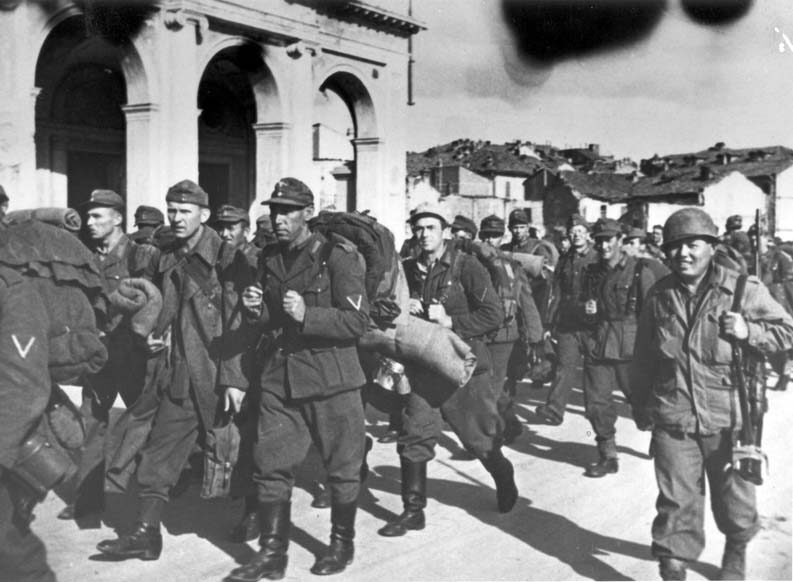
442nd RCT is key to Allied success in breaching the Nazi’s Gothic Line in northern Italy. Intended as a diversionary attack, the 442nd climbs in secret at night to the ridgeline and mountaintop German defenses, attacks at dawn, and completely defeats the enemy positions. What follows is a series of continuing attacks by the 442nd, […]
522nd FA Bn Liberates French POWs
On April 30 the 522nd Field Artillery Battalion liberates a large number of French Army soldiers and captures their German Army prisoner of war guards near Moerlbach, Germany. It is likely that these French soldiers were captured in the failed attack on Moerlbach on 1-2 March 1945 by the 1st French Army Group.
522nd FA Bn Liberates Dachau Prisoners
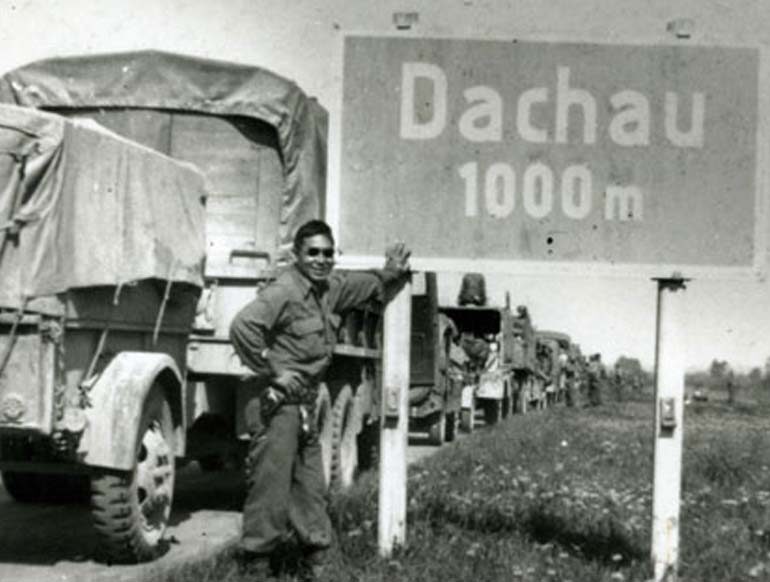
German Army in Italy Surrenders
VE Day – Victory in Europe
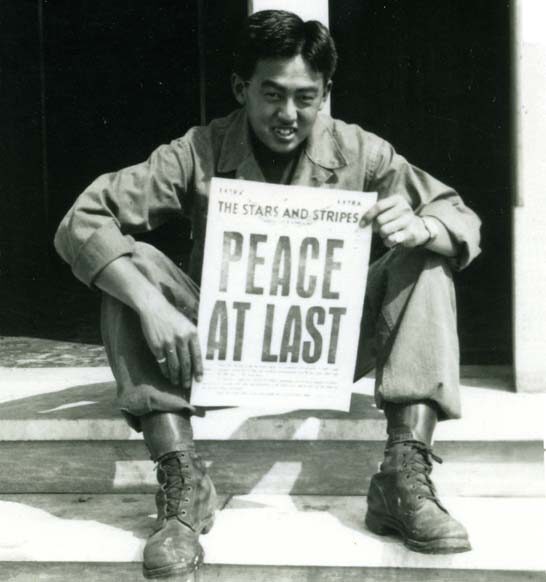
Germany surrenders all forces unconditionally in Reims, France, on May 7. Victory in Europe is declared the next day, May 8. The 442nd in Italy becomes part of the occupation force, ultimately stationed in Livorno. In Germany, the 522nd Field Artillery Battalion also transitions to occupation duty. It is assigned responsibility for a district in […]
Potsdam Declaration
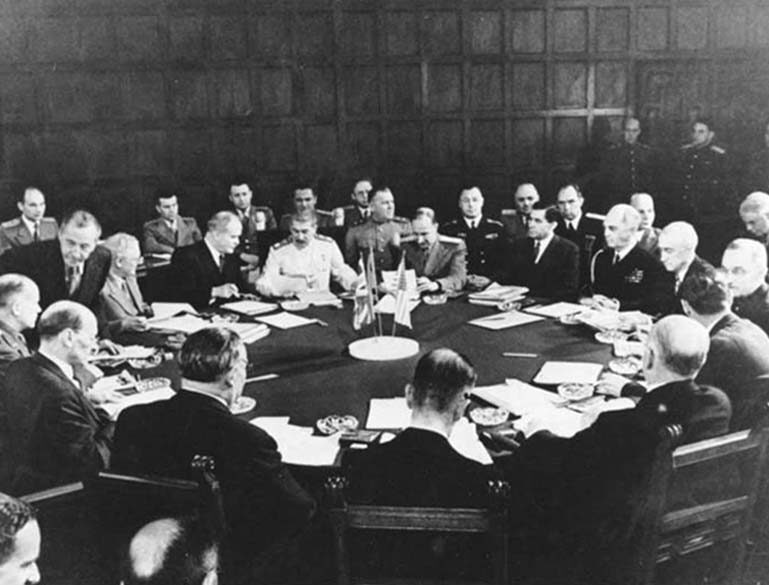
100th Veterans Clubhouse Opens
442nd Returns to America
President Truman Awards 442nd
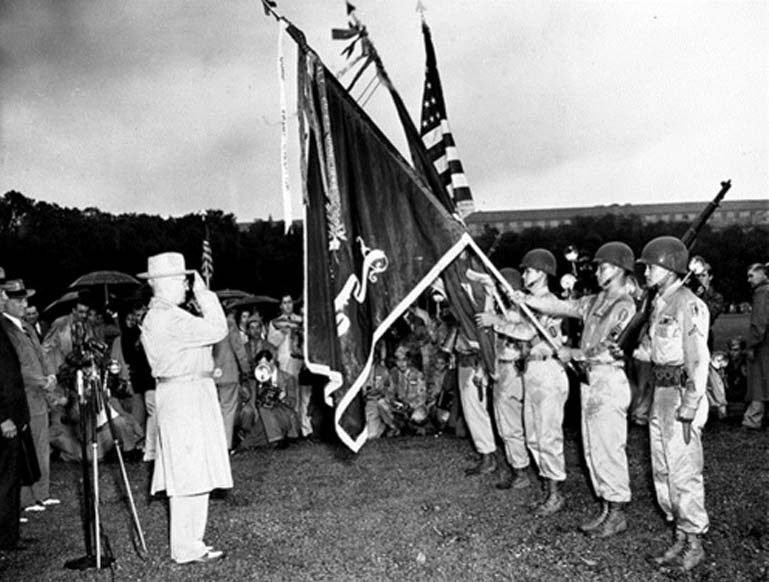
President Harry S. Truman presents the Presidential Unit Citation to the 442nd RCT. Awarded for its battle to break through the vaunted Nazi Gothic Line in the rugged North Apennine Mountains of Italy, this is the 7th PUC garnered by the 100/442nd. His words echo over America: “You fought not only the enemy, you fought […]
442nd RCT Veterans Return to Hawaii
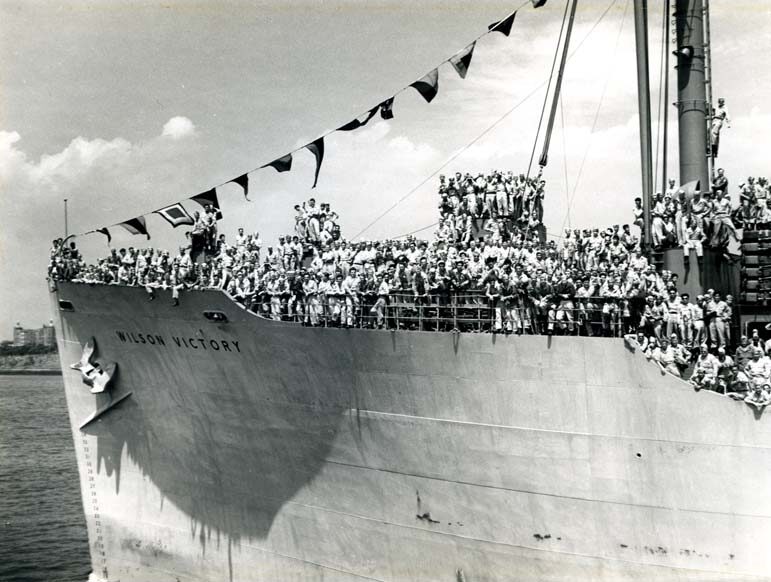
President Truman Orders Desegregation
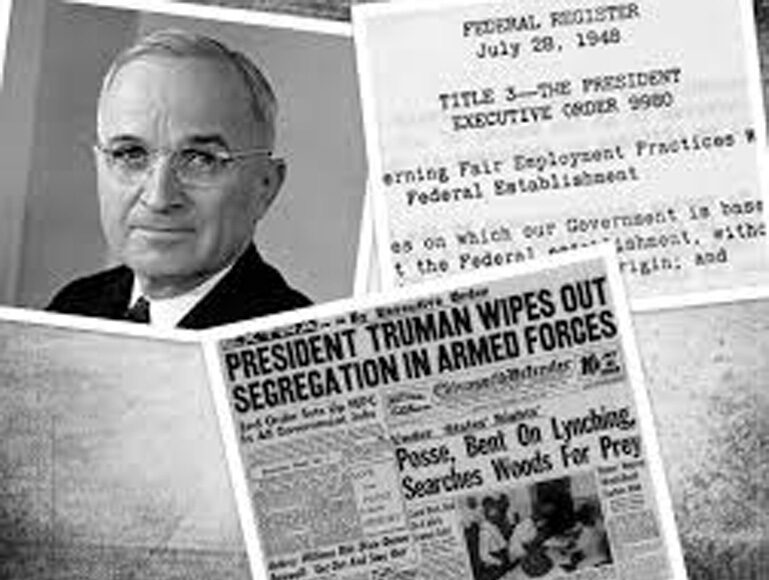
442nd RCT Veterans Club Opens in Honolulu
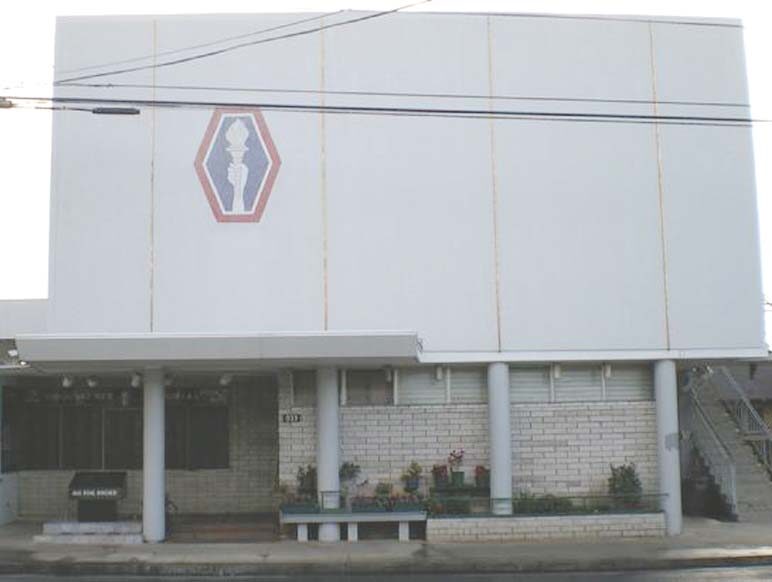
1399th Veterans Club Organized
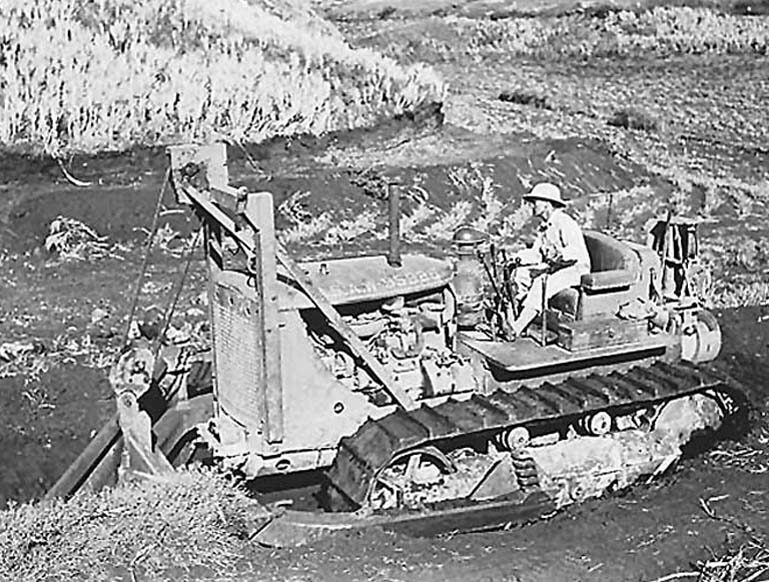
442nd Veterans Clubhouse Opens
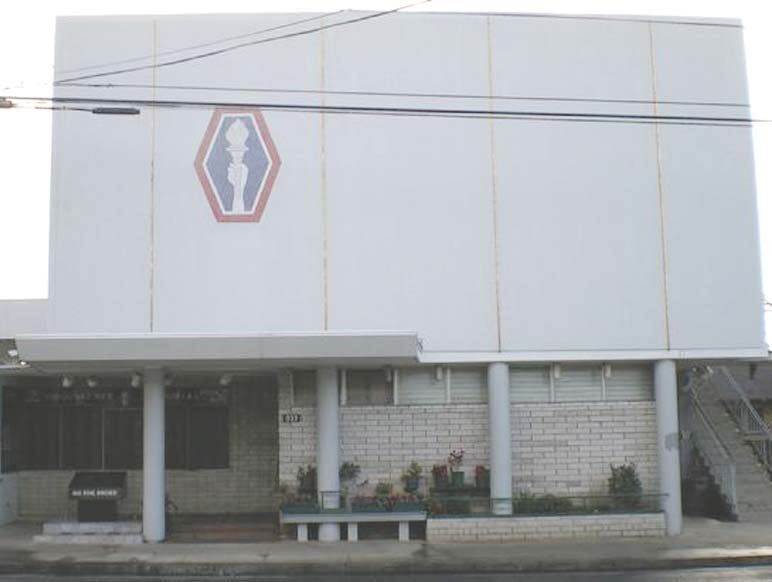
Honolulu & Bruyères Sister Cities
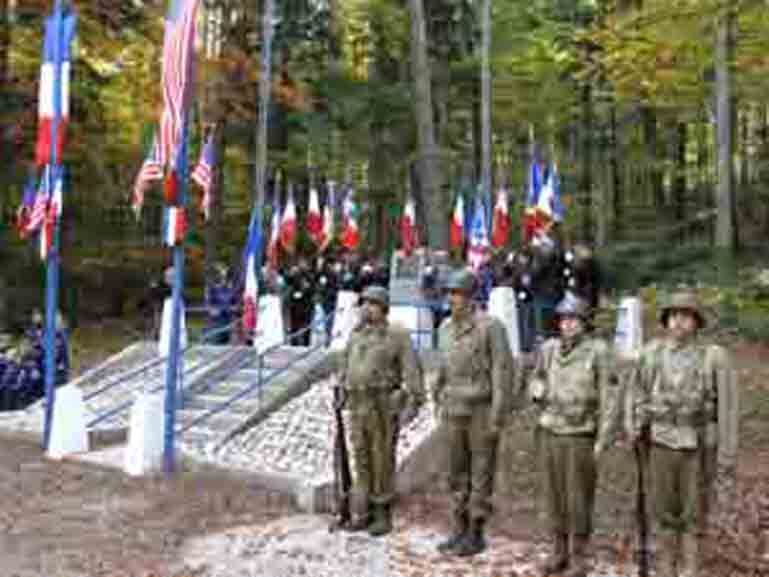
Honolulu & Bruyères, France, establish Sister City relationship. To this day, they have a big celebration event every year that gives thanks to the Japanese Americans who liberated them from years of oppression by the Nazis. Many veterans, and now their grandchildren, have traveled to France to join in these celebrations.
Spark M. Matsunaga Elected US Representative
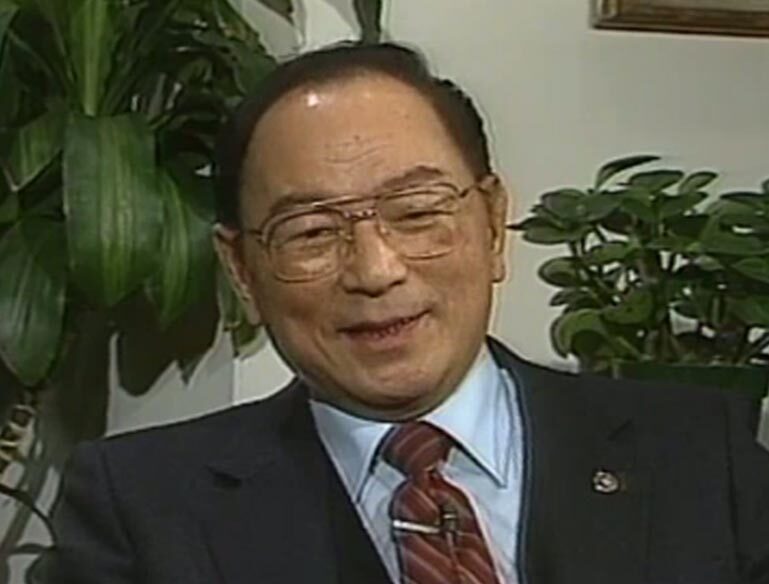
Executive Order 9066 Rescinded
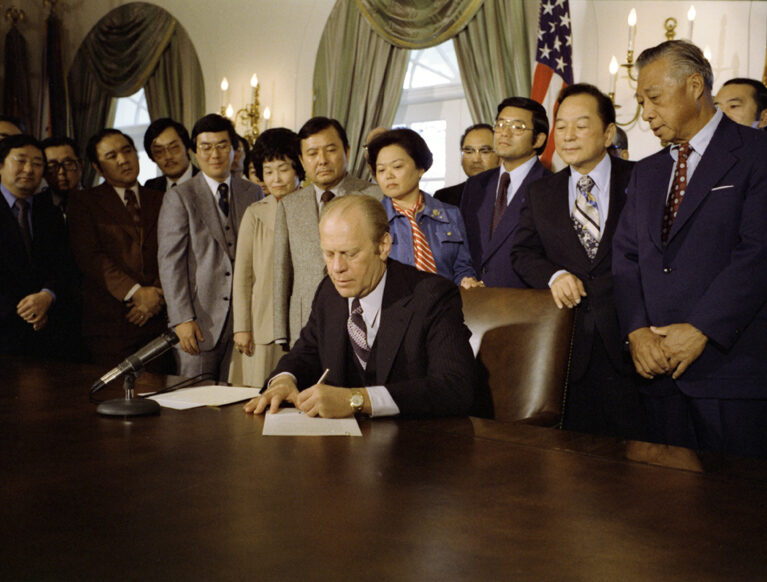
President Gerald R. Ford issues Proclamation 4417 rescinding Executive Order 9066: “We now know what we should have known then – not only was that evacuation wrong, but Japanese-Americans were and are loyal Americans….I call upon the American people to affirm with me this American Promise-that we have learned from the tragedy of that long-ago […]
Congress Admits Injustice of AJA Internments
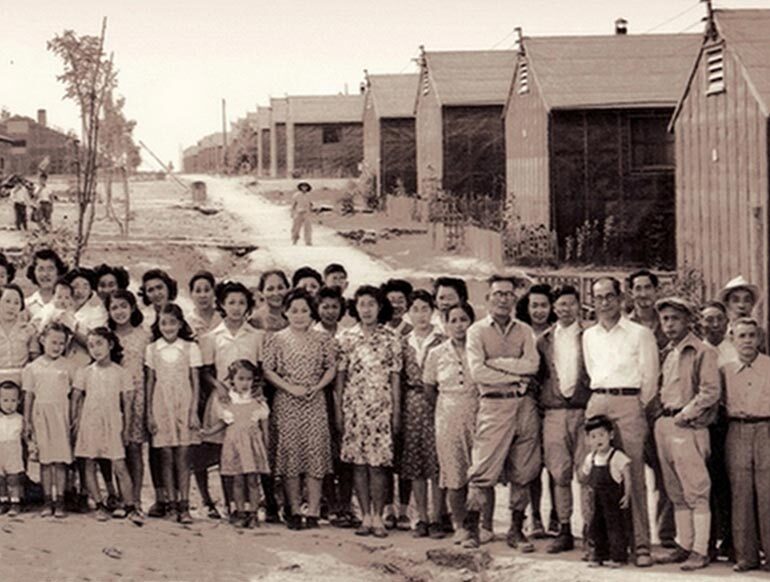
Congressional Commission on Wartime Relocation and Internment of Civilians established; December 1982 report “Personal Justice Denied” states the mass incarceration of AJAs based on “race prejudice, war hysteria, and a failure of political leadership” and recommends an apology and payment to surviving internees.
Congressional Gold Medal Awarded to Nisei Units
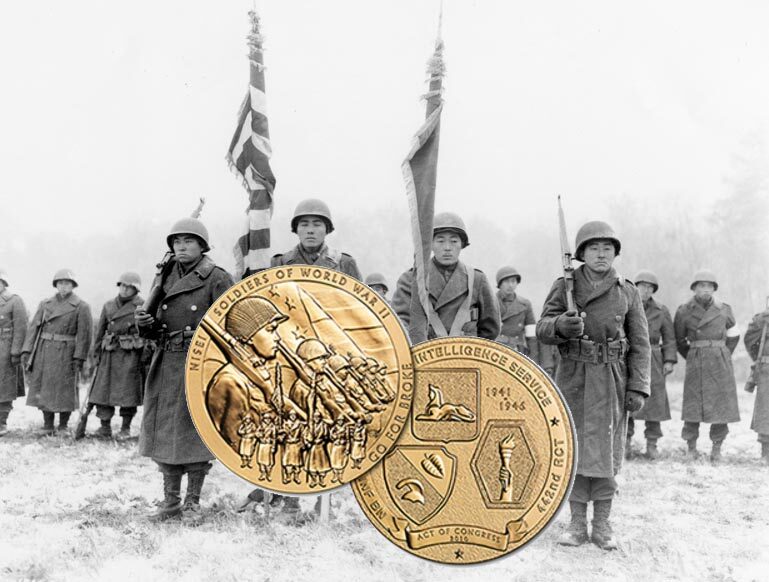
442nd Veterans Awarded Légion d’Honneur
